With a new camping season just dawning, many RVers are starting to plan their first trips. As they map out their itineraries, RV travelers often consult Good Sam Campground finder to locate campgrounds near their destinations. Others opt for the hardcopy Good Sam Campground Guide. Once they have narrowed their choices, they will soon make reservations at the chosen parks and select the right campsite.
Alright, you have arrived at a camping venue. Generally, campground management will assign a site to you based on the type and size of your RV and needed services. During times of relatively low occupancy, some campground operators will allow you to drive through the park and select the site you wish. You then return to the office and register. This is a great way to pick the perfect site if this is available. Some reservation services give campers a great deal of detail about where they are camping.
Regardless, let’s look at what lot features, configurations, and characteristics are most desirable.
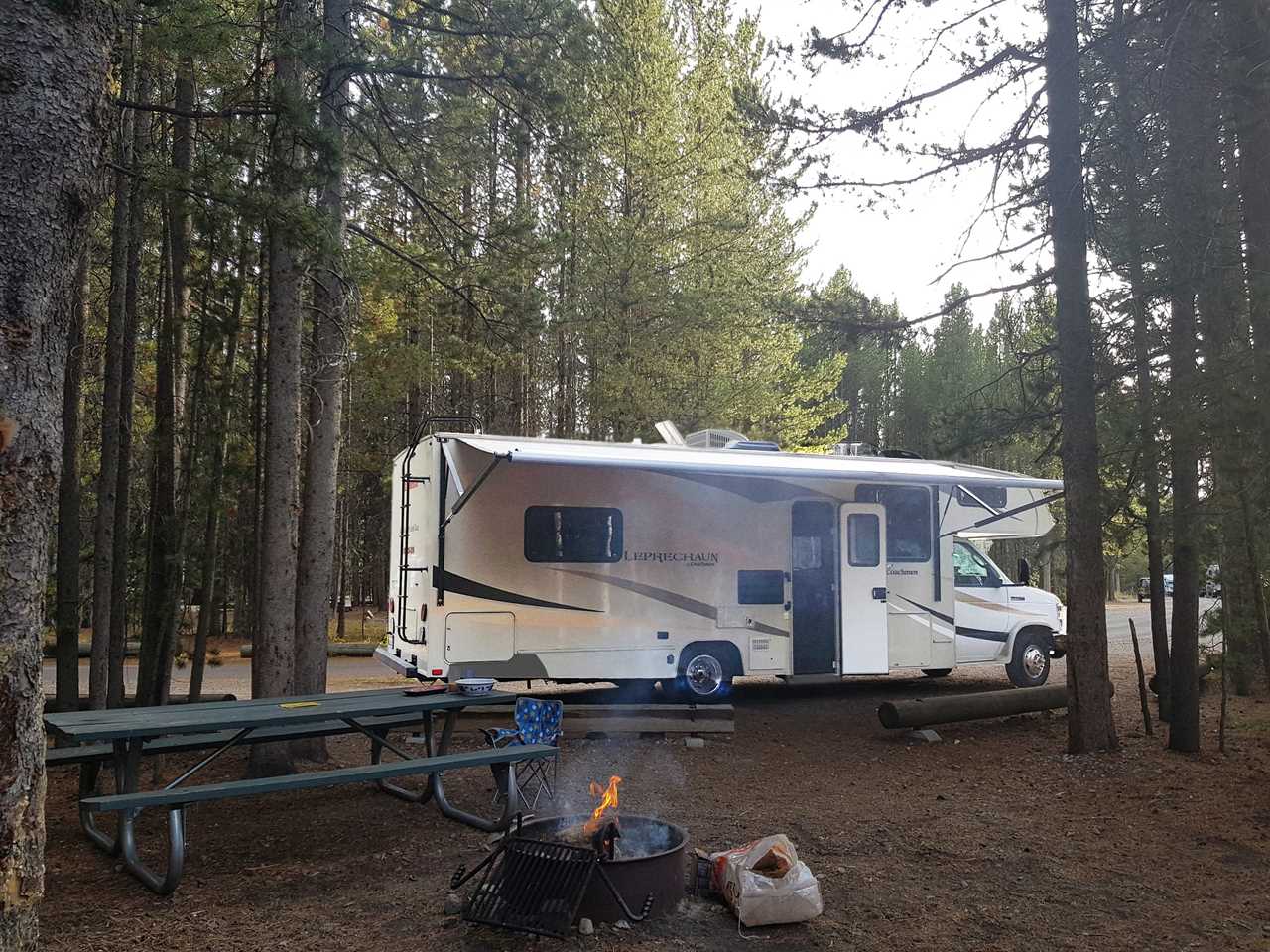
Pixabay
Site Size and Service Pedestal Positioning
Make sure you get ample site length and width to accommodate your RV and towed or tow vehicle, if applicable. Check that the service post is equipped with what services you require and that the positioning will tether without issue.
Here are a few of the types of sites you can choose from:
Pull-Thru sites: Do you drive a long RV and like getting in and out of the site easily? A pull-thru site allows campers to enter and exit a site without backing — it’s ideal for RVers who tow trailers and/or folks who are staying for just a short while. The drawback is that it backs onto a road, reducing the privacy that may be available in back-in sites.
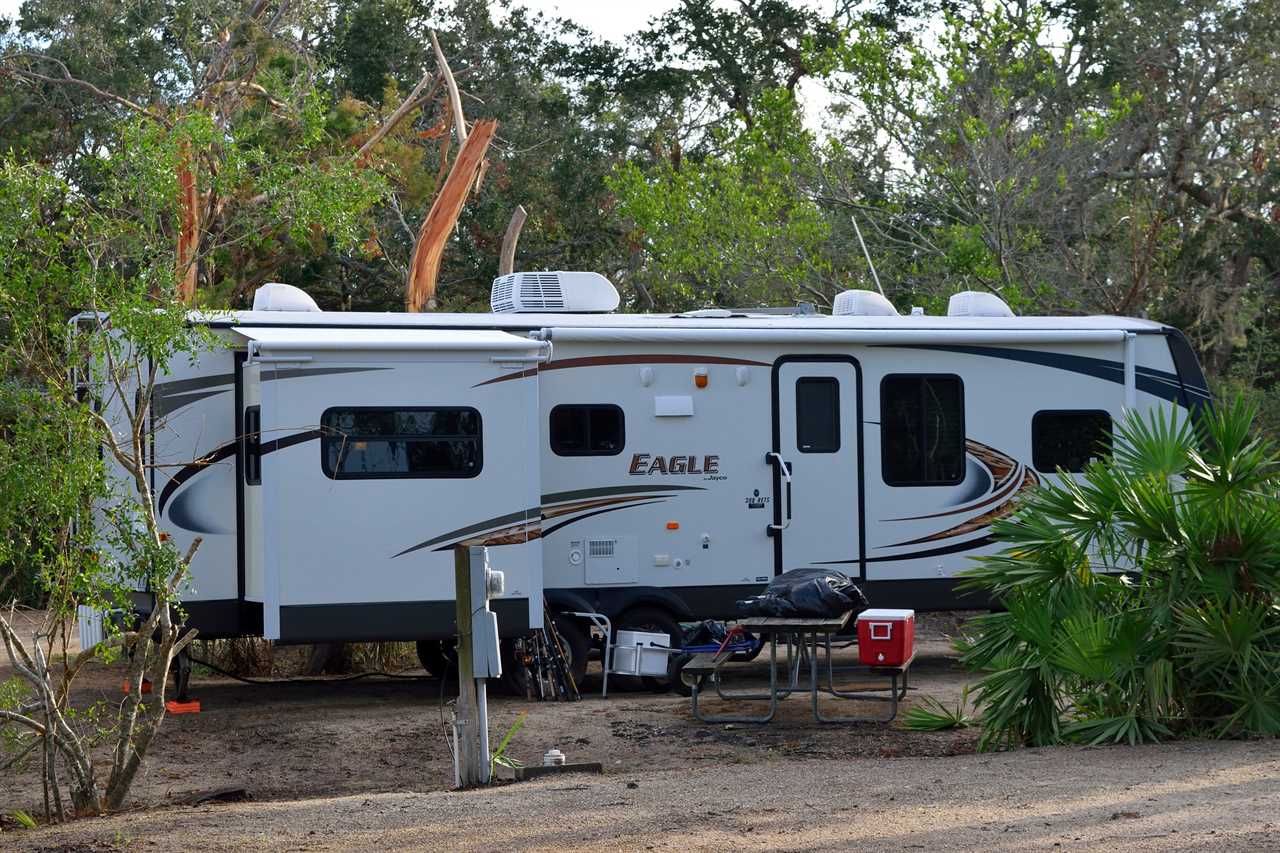
Pixabay
Back-in sites: Backing an RV into a site is one of the most unappealing chores in the RV lifestyle, but it’s worth it once the vehicle is in “park” and your awning is unfurled. If you’re a privacy-craving snowbird who plans to hunker down for weeks on end, a roomy back-in site is probably preferable.
Big Rig sites: If you drive a long motorhome and tow a dinghy vehicle, a big rig site is an answer. These spaces accommodate RV configurations that are more than 60 feet in length and wide enough for a large array of slide-outs.
Overall Park location
Choosing a general location in the park to best suit your on-site activities and lifestyle can make your stay more enjoyable. In this situation, a review of the campground’s map can be helpful. The good news is that many parks provide online maps showing the positions of available sites when you make your reservation.
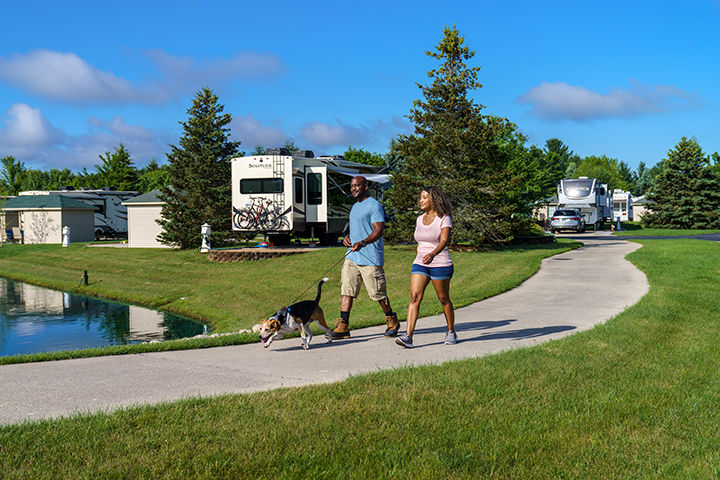
Traverse Bay RV Resort. Photo: Camping World
Think about your ideal spot. For example, being adjacent to the beach or playground will allow you to keep a closer watch on your kids from the comfort of your RV site. Prefer peace and quiet? Look for a site away from all the action. If the RV park has an adjoining golf course and you’re itching to hit the fairway, you probably want a site that’s a short walk from the tee box. If you’re a social butterfly, stay close to the campground’s high-traffic areas.
Tree Clearance
Many sites offer shade trees, which can offer welcoming cooling under the summer sun. But make sure that you have plenty of clearance for your vehicle. Tree branches should be high enough to be clear of the RV roof and appendages such as antennas and vents. Likewise, bushes should be well clear of the body so that even wind gusts will not cause them to contact the RV body. These can not only be noisy on windy days but also can damage the paint or gel coat surface.
Positioning of the RV Relative to the Sun
Summer’s hot, sunny days can bring the highest temperatures in the afternoon. Shady trees to the west of the rig can help reduce some of the sun’s hot afternoon rays. For many motorhomes, the front of the unit has the most glass exposure. All this glass area can cause excess heat to the interior of the coach. To avoid this, positioning the front of the vehicle to the east would help. However, such positioning would negate the awning’s shade throughout the day. Generally, the ideal position for a motorhome to reduce the afternoon sun exposure would be facing north. This would provide reduced sun exposure on the glassed areas and shade on the patio and awning side.
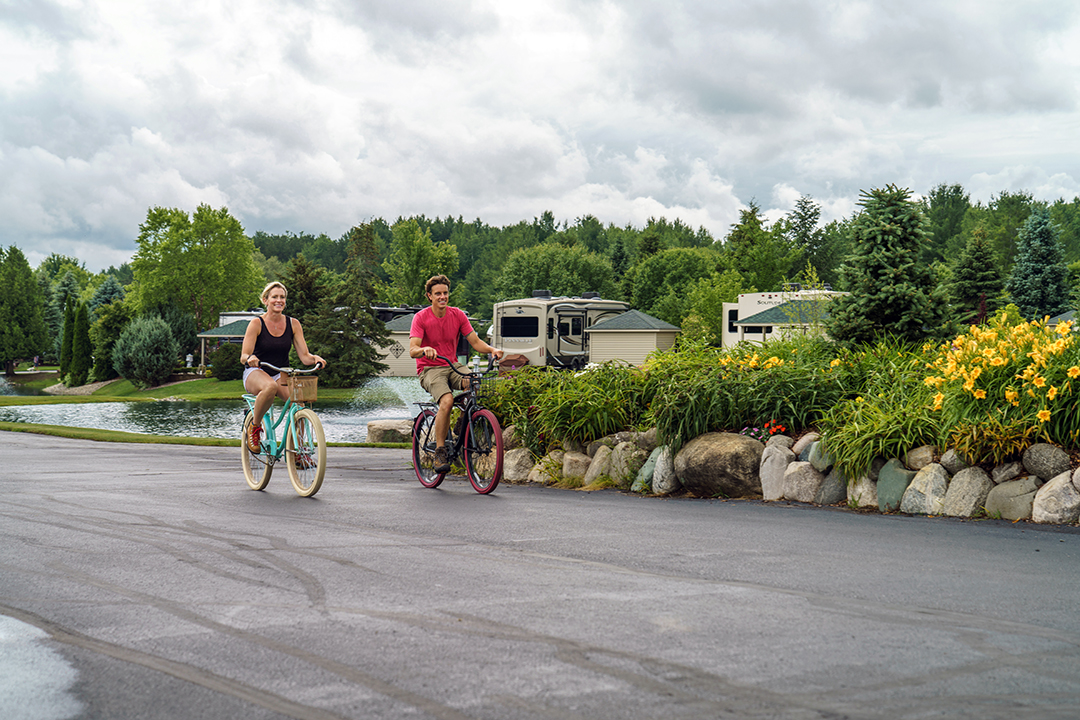
Traverse Bay RV Resort. Photo: Camping World
Getting a Satellite-Friendly Site
Many RV travelers enjoy their TV sports, news, and late-night movies. The portability of satellite service anywhere in North America has driven its popularity throughout the nation. However, the small dish antenna must be able to electronically see a satellite located about 23,000 miles away. To accomplish this, it must have an uninterrupted but focused, view skyward. Some treed sites may not be able to support this. While the satellites are stationary, tree branches are not when wind gusts are present. If satellite service is important to your stay it may be something you should ask when making your reservation.
Water & Sewer Hookups
Keep in mind that sewer service may vary at RV parks. Some waterfront sites, for example, don’t offer sewer for obvious sanitation reasons. But the sacrifice may be worth it for the view, and some RV parks offer honey wagon service to empty the holding tanks. If you’re parking in a spot without sewer, note the location of the restrooms. Also, be aware that some RV parks in remote parts of Alaska and the Yukon don’t always offer sewer service; it’s a small tradeoff for camping amid rugged scenery.
On the Level
While most RVs are equipped with leveling jacks, the selection of a relatively level site is a wise choice. Jacking an RV excessively in one corner may not be an ideal situation. Additionally, setting up on a non-level site can leave the entry steps awkwardly high from the ground.
Well, those are some of the ways that may help you choose a great campsite to best meet your requirements. You might also like to make a note in your RV logbook of the best campsite numbers. This way you can request one of your favorite sites if such specific requests are available.
Hopefully, some of these tips can help you pick the perfect spot for a memorable relaxing stay.
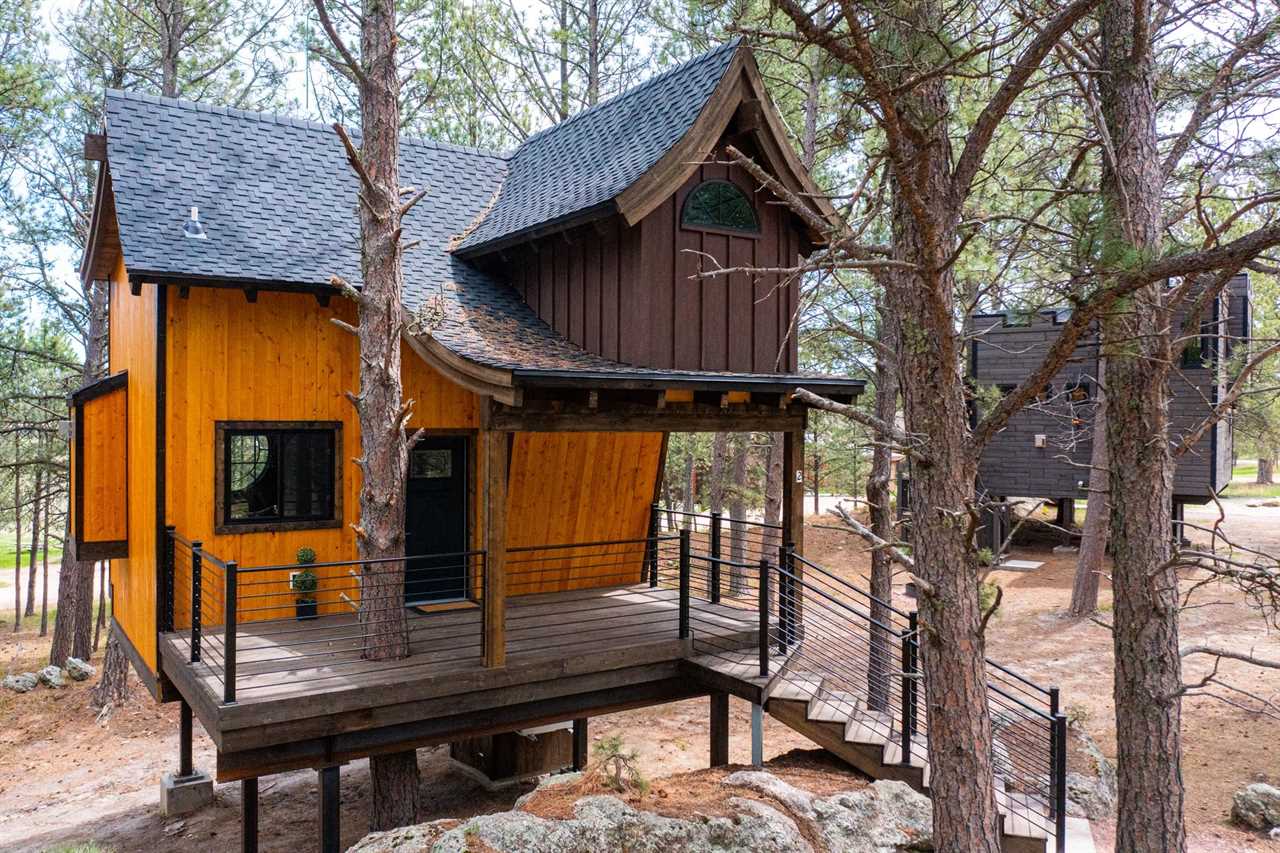
Buffalo Ridge Camp Resort in Custer, South Dakota
Non-RV Alternatives
Inviting non-RVing buddies to your outing? You’ll want to camp close to the park models/cabins/tents where they’re staying. And If you’re not an RVer but would like to enjoy a campground experience in a yurt or park model, many of the same rules outlined above apply.
Canine Considerations
Dogs make great traveling companions, but these furry passengers sometimes can be challenging. If your canine barks at everything that moves, you’ll want a site as far away from foot traffic as possible. The same goes for cats that are prone to stress. And if you opt to camp close to a dog run, you can give Fido a chance to burn off steam nearby. Check out these 5 tips on camping with your dog for a hassle-free experience.
Peter Mercer – Searching Out The Best Spot
The post Room for Your Rig: Finding the Right Campsite appeared first on Good Sam Camping Blog.
By: Peter Mercer
Title: Room for Your Rig: Finding the Right Campsite
Sourced From: blog.goodsam.com/finding-the-right-campsite
Published Date: Wed, 29 Mar 2023 18:10:00 +0000
---------------------------------------------
 CampingSurvivalistHuntingFishingExploringHikingPrivacy PolicyTerms And Conditions
CampingSurvivalistHuntingFishingExploringHikingPrivacy PolicyTerms And Conditions
